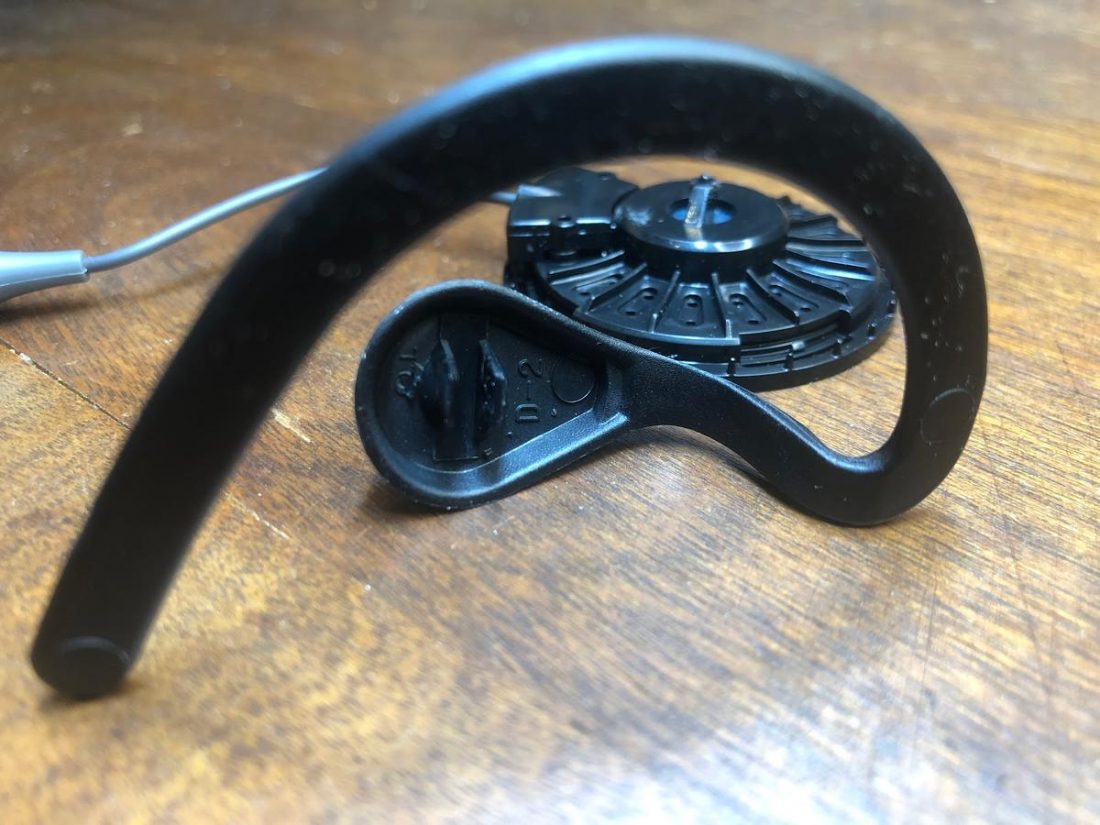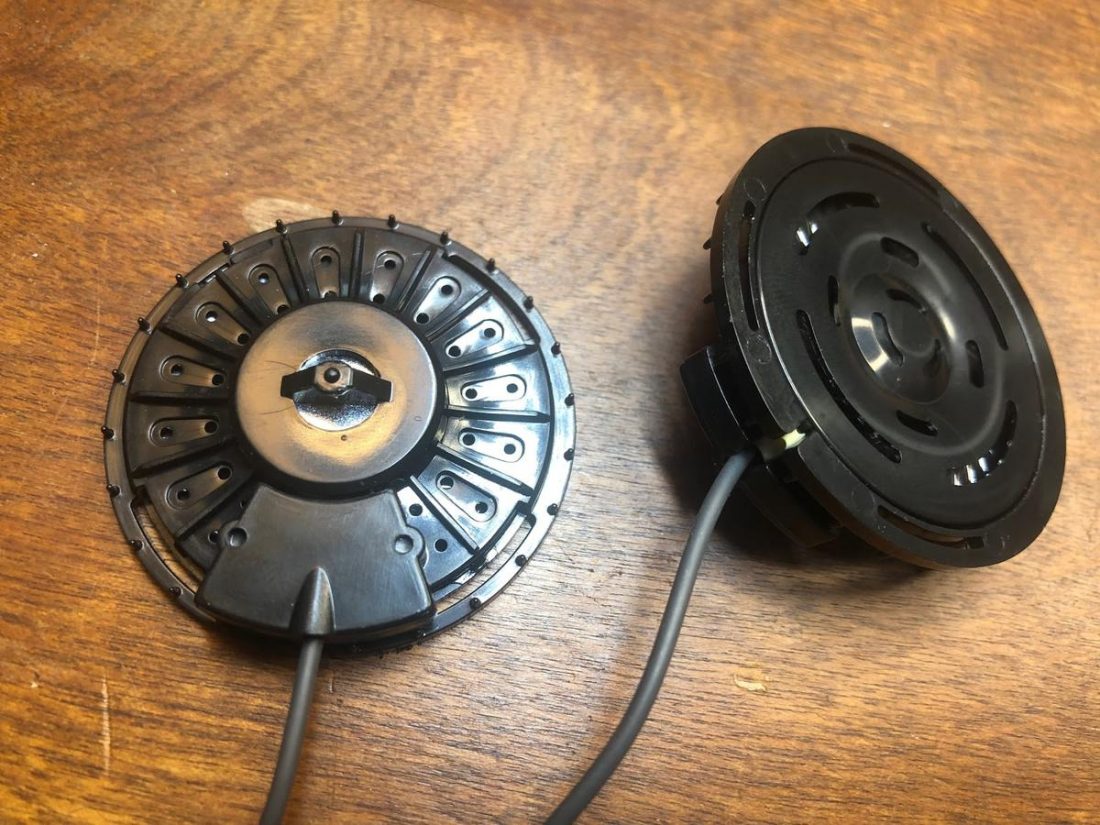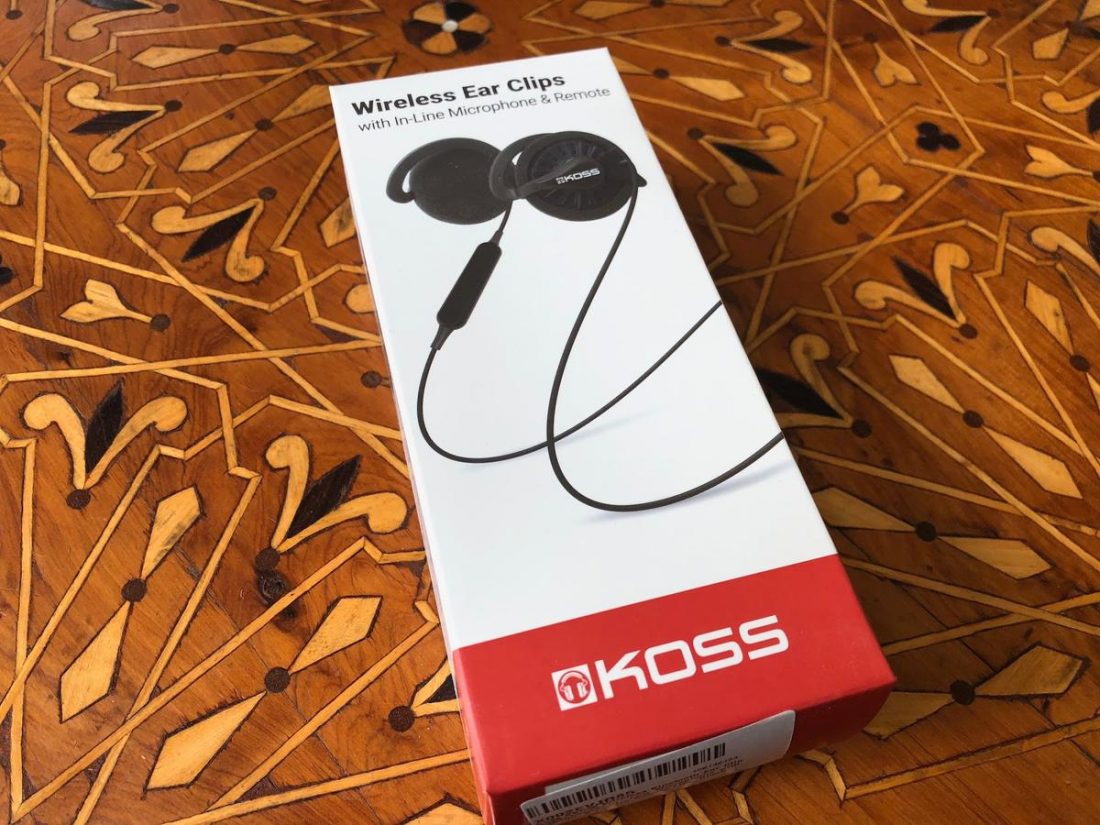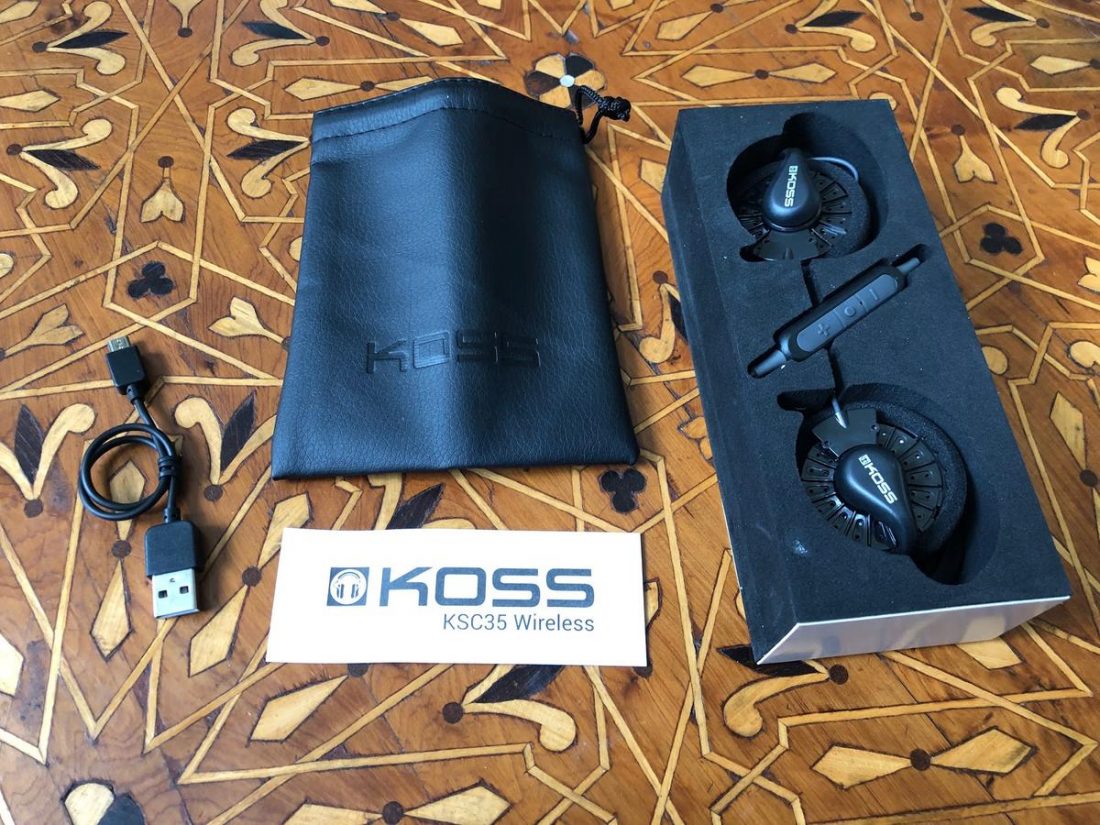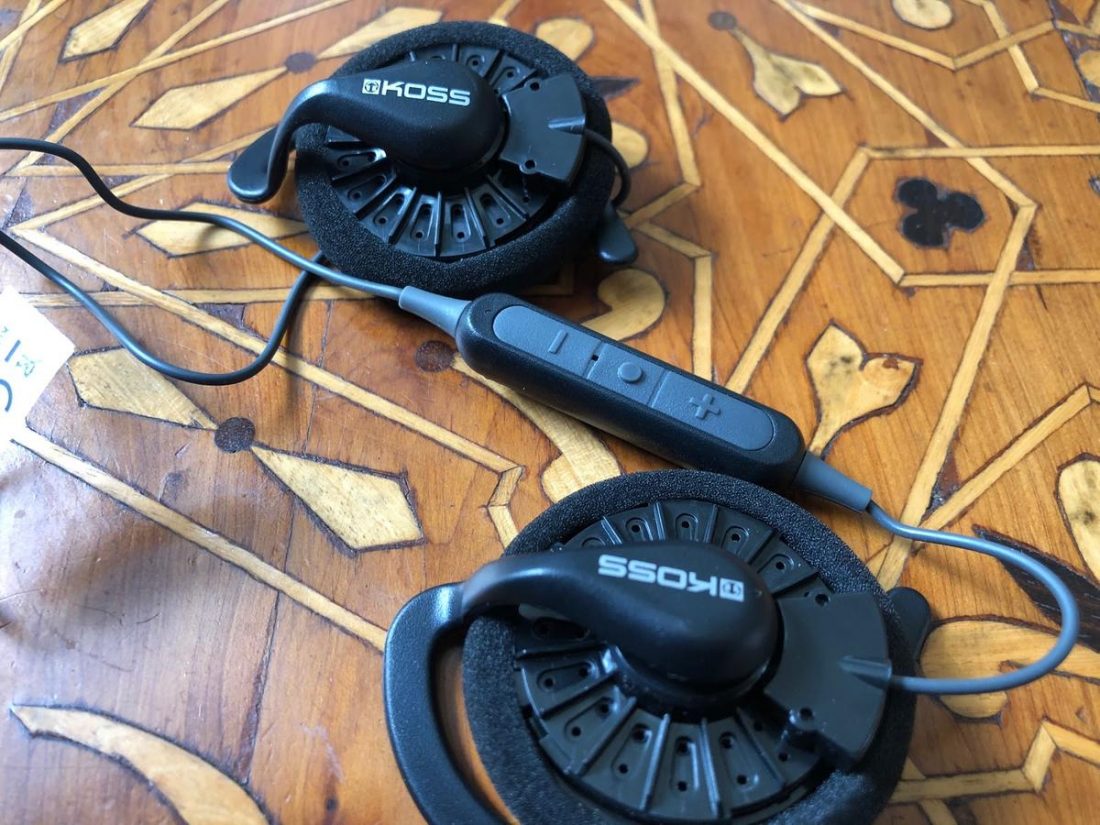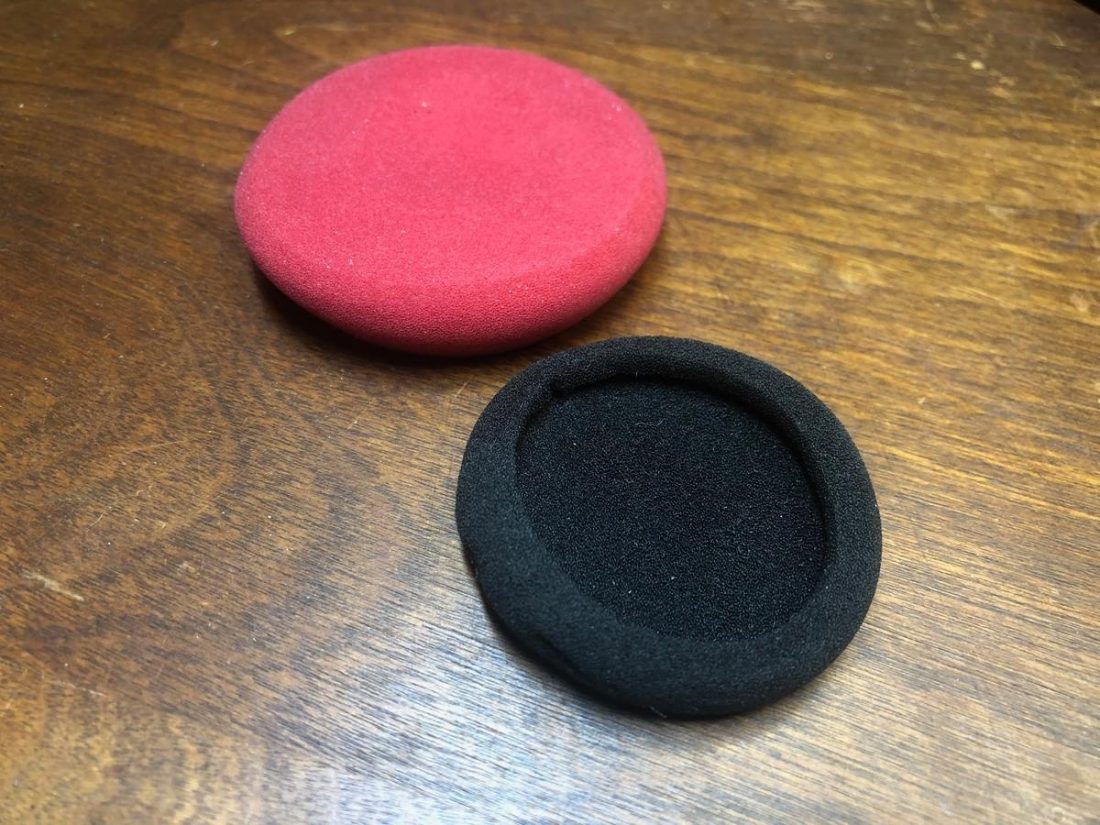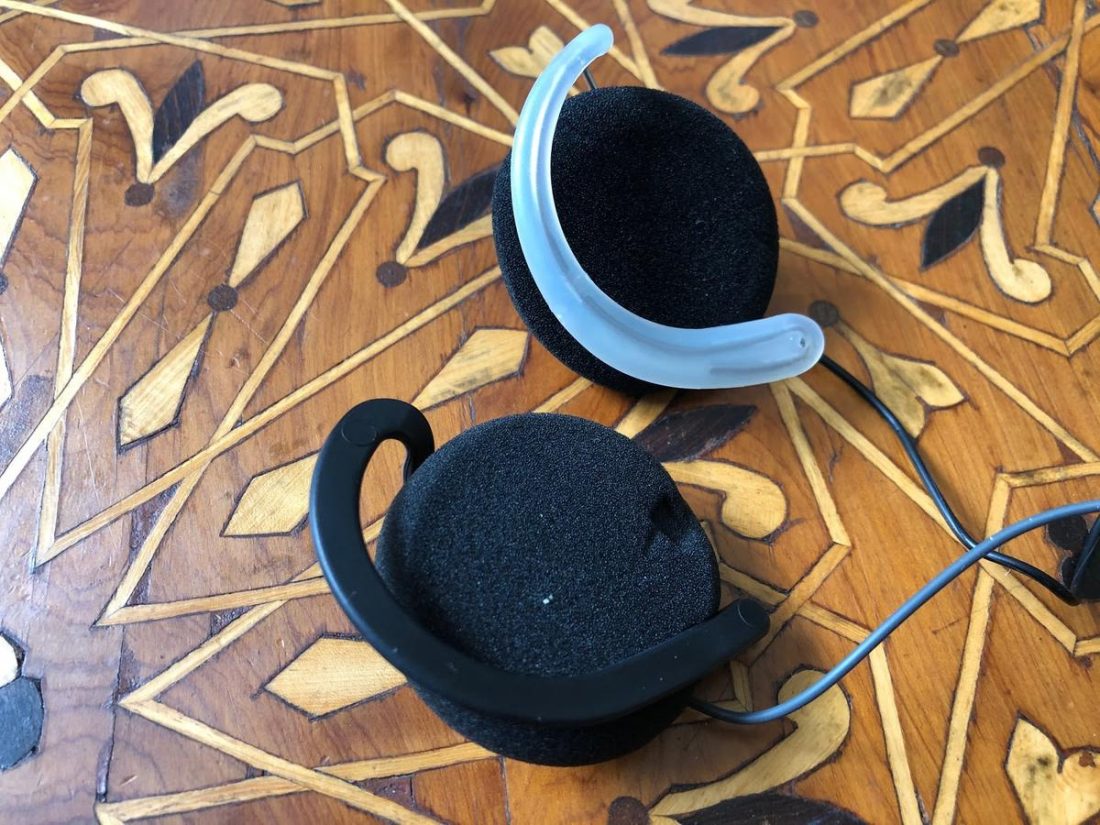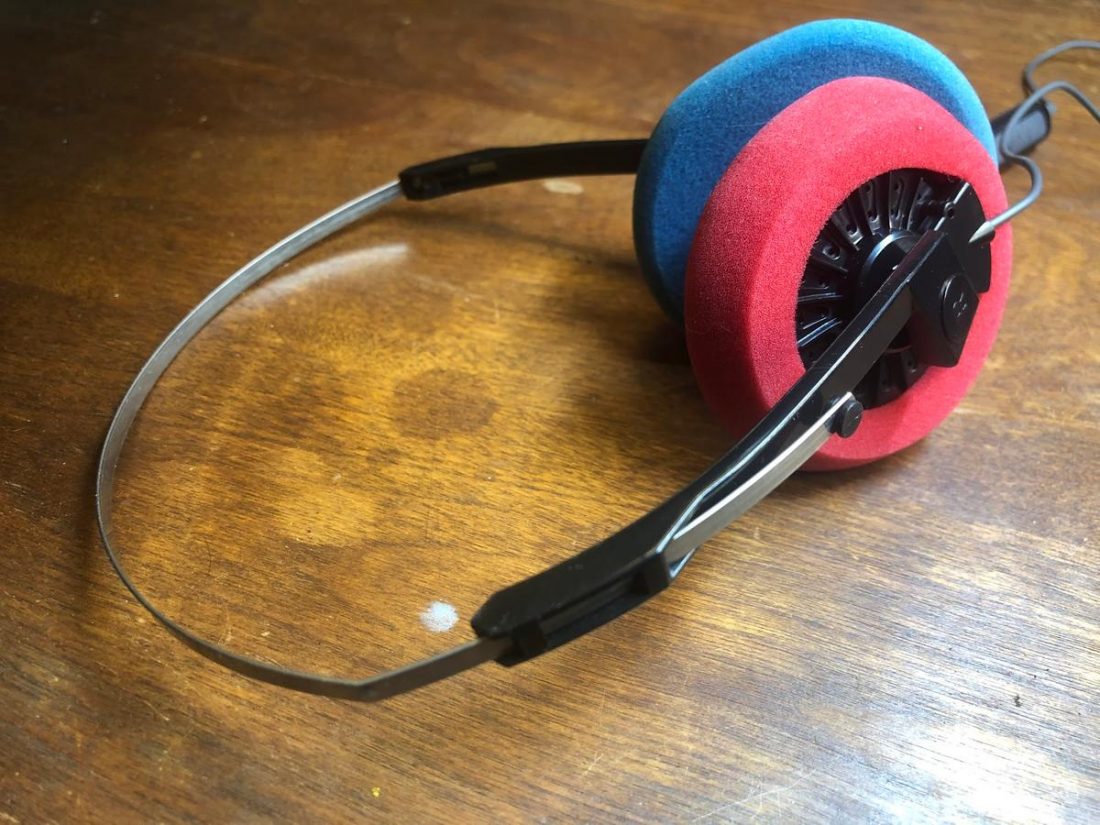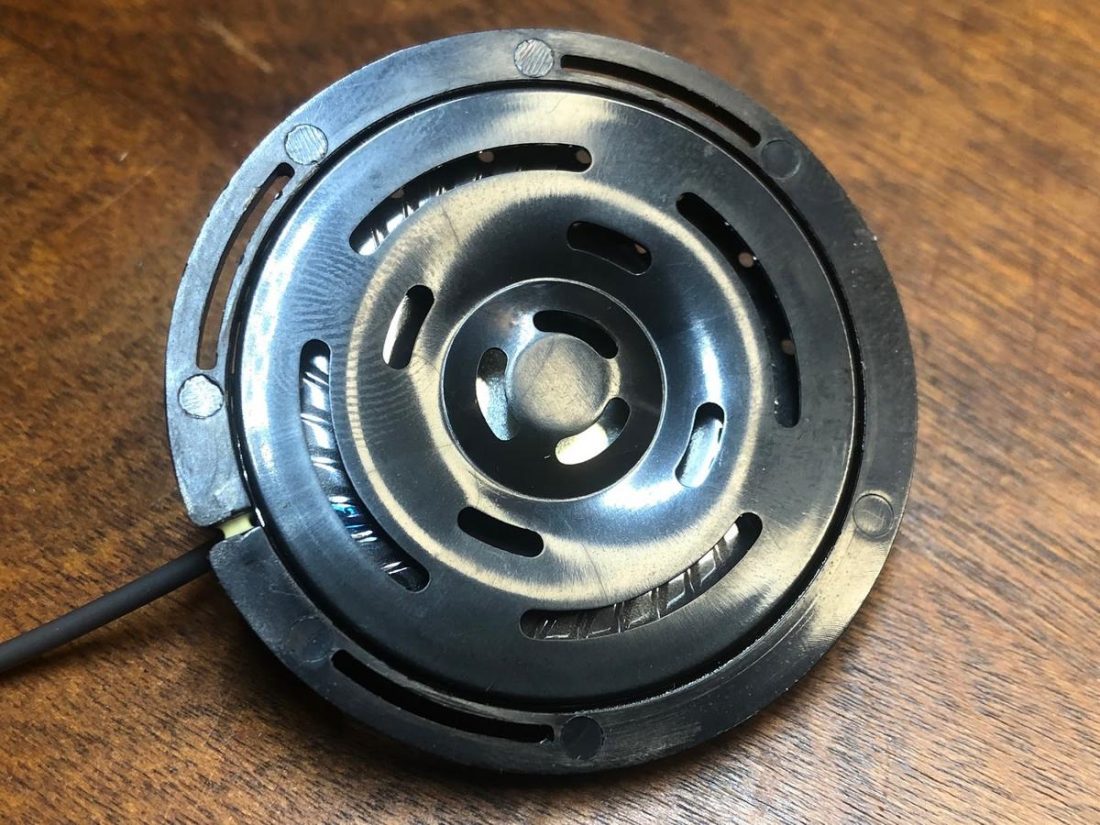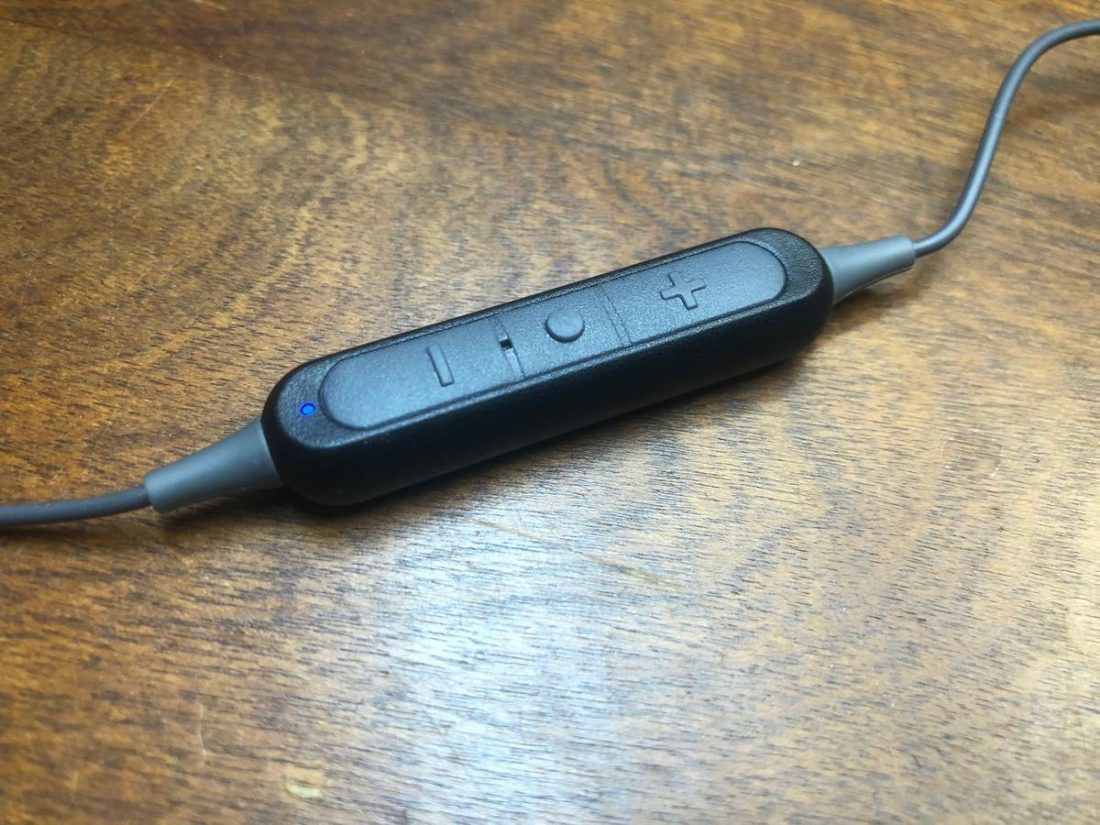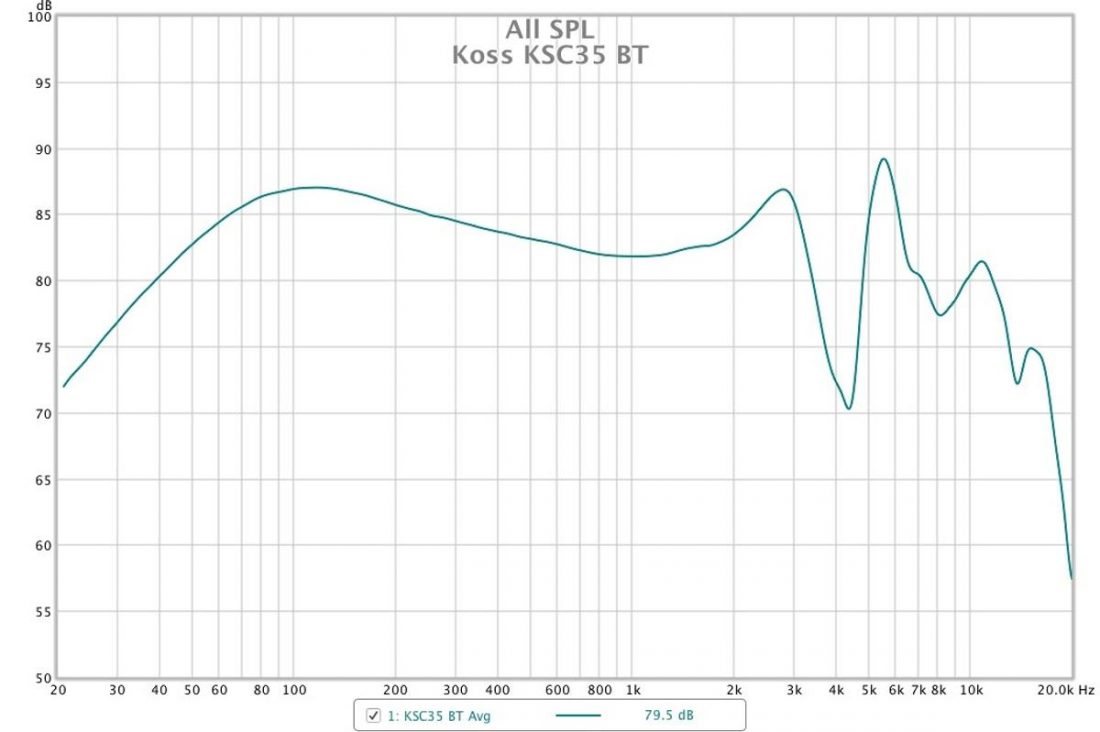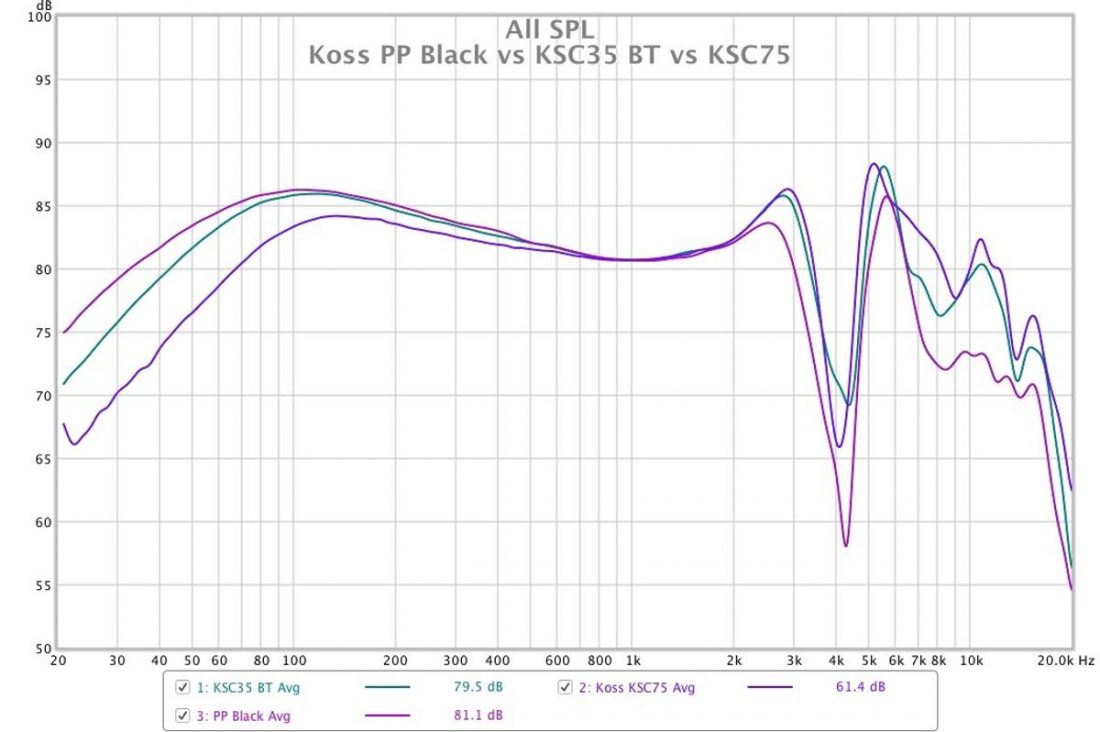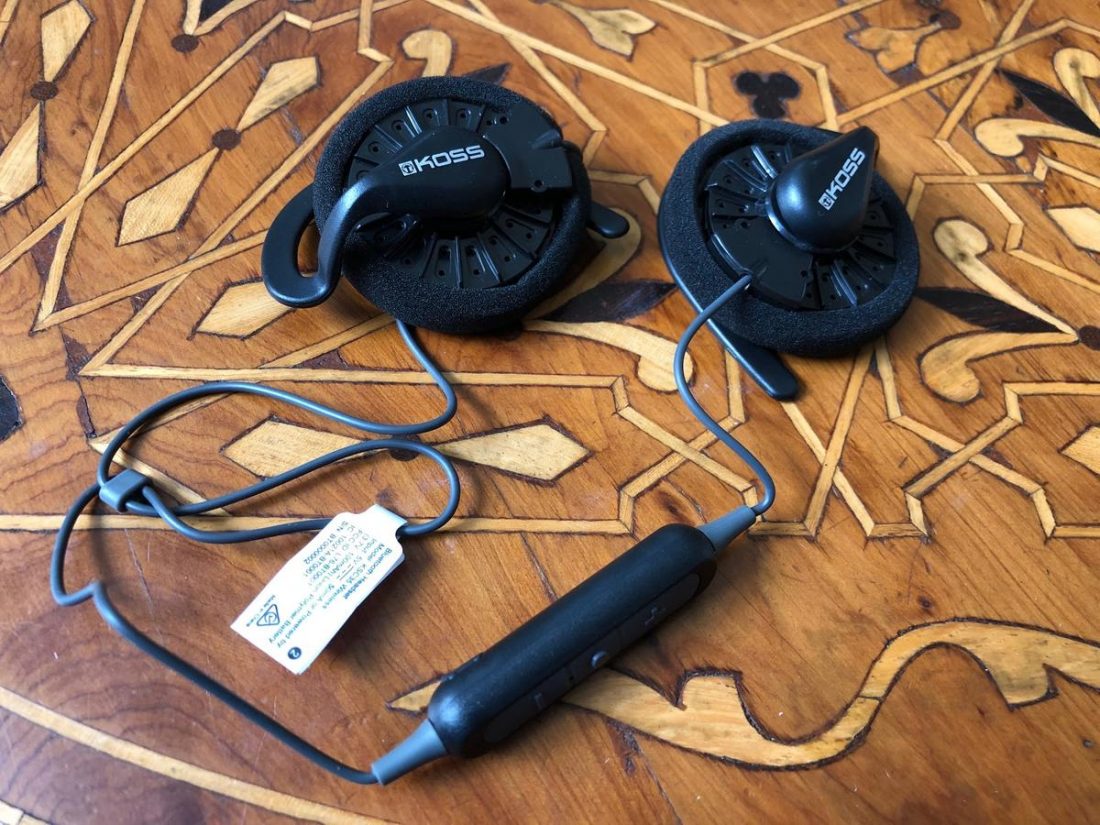How does Koss do it? I can think of very few other tech companies releasing products designed decades ago, which have remained essentially unchanged, and that continue to attract new customers, involve the modification community, and excite the enthusiasts. They must have a secret recipe of herbs and spices going on to maintain their loyal following, year over year. Well, Koss does have a couple of essential components in their favor. Their products are often bargain-priced (below $100). Most of them come with a lifetime warranty (something almost unheard of in the audio industry). Oh, and they sound good. In fact, often extraordinarily good for their price point. In the ’80s, Koss struck gold with a particular driver design. This unique 35mm, 60ohm driver became the heart of their iconic Porta Pro headphones. This driver also shows up in other Koss headphones, including the Sporta Pro, KPH30i, and the KSC35. A titanium-coated version is used in the UR40, KTXPro1, and KSC75. The KSC35 were originally released in January 1995 and have come and gone over the years (they were discontinued around 2000 but came back in the mid-2000s). What hasn’t changed is that they provide terrific value for their modest price. Inexpensive but excellent is always a winning combination. Today, we’re exploring the most recent 2020 release of the Bluetooth wireless version of the KSC35. The KSC35 were reportedly the first ear clip style headphone. Ear clips are a fairly unusual style for portable headphones, especially in this time of IEM dominance. However, many companies still offer one or two clip-on models, including Audio Technica, Philips, and Audeze. While the KSC35 clips don’t appear comfortable or particularly well made to my eyes, clearly, they must offer something special. Let’s dive in and find out why these headphones still have their fans after so many years!
Company Overview
Headquartered in Milwaukee, WI, Koss Corporation is the quintessential classic American headphone company. John Koss and his partner Martin Lange JR. developed the “world’s first stereophones, the SP/3” in 1958. The SP/3 were intended to be an accessory for their new stereo record player, but stole the spotlight. Koss eventually branched out into creating home theaters, DVD players, portable media players (MP3), tabletop stereo systems, and boom boxes but has since closed the “Koss Electronics” line. Koss Corporation now focuses on what they do best, manufacturing both dynamic and electrostatic headphones and microphones.
Technical Specifications
Form: Ear clip portable Bluetooth headphones Drivers: 35mm Dynamic driver Impedance (Ohm): 60ohm Sensitivity (dB): 101 dB SPL/1mW Frequency Response (Hz): 15 Hz – 25 kHz Removable Cable: N Bluetooth Audio Codec: SBC Battery Life (hrs): 6 True Wireless: N Bluetooth Version: 4.2 Mic: Y Weight (g): 33 Warranty: 1-Year limited
Packaging
Koss uses a standard white cardboard box design with red highlights for most of their products. The front of the box has a conventional high-resolution photo, while the back shows the driver’s construction and instructions for the inline remote. The packaging design is immediately recognizable as Koss and is clean and classy. Inside, the KSC35 are nestled in dense back foam with the inline remote displayed between the earpieces.
In the box
KSC35 Wireless Ear Clips Micro USB charging cable Instruction manual Pleather storage bag
Cable
Although “wireless,” the KSC35 do have a ±53cm grey rubber cable, with a 5 cm long inline remote control containing a microphone and the battery. Also included on the cable is a small chin slider. The cable is thin, has no strain relief at the ear cup connection, and overall isn’t very confidence-inspiring as to its longevity. The remote control is a standard 3-button affair, with grey rubber buttons for volume and track skip surrounding the play/pause/power/pairing center button. The red/blue LED is thankfully tiny and not overly bright (unlike the one in the wireless Porta Pro I reviewed). Charging is done via a micro USB port on the bottom of the remote control module.
Design
The KSC35 were designed two and a half decades ago using a driver design from ten years earlier. And they look the part. Retro-cool or just retro? I’ve got a soft spot in my heart for the classic Koss look, but whether you like Walkman tape players’ aesthetics and portable CD players is a personal preference. Generally speaking, the KSC35 are entirely made of plastic and feel inexpensive. I forgive you for assuming that they are terribly fragile if you’ve never owned a Koss headphone before. However, I’ve had Porta Pro headphones last for decades. While certainly far from indestructible, they are more robust than they seem, although I would suggest using a protective storage case if you are going to backpack the KSC35. The KSC35 define open-back, on-ear headphones. Perched daintily upon your ears, they leak about as much sound outwards as inwards. Additionally, they allow plenty of environmental noise to reach the listener, although I find this beneficial when using the KSC35 for walks or other outdoor activities.
Comfort
The plastic ear clips are fairly rigid and non-adjustable. So, comfort is a bit of a crapshoot. You can rotate the clips around on your ears, but if your particular ear shape isn’t a perfect fit, you may struggle to wear the KSC35 for long periods. Surprisingly, the clips hold the KSC35 securely on the ears and stay in place for most light activities, including jogging. While are more robust, the similar KSC75 sport thicker rubber-coated metal clips, which are heavier and somehow feel less secure on my ears. Note that the Porta Pro and Sporta Pro headbands, or the KSC75 ear clips, can all be swapped with the KSC35’s clips. The drivers simply snap in and out of the band or clips. I primarily use the KSC35 with Yaxi ear pads and a very inexpensive (less than $5) Parts Express headband.
Putting on the KSC35
Internals
According to Koss, the “computer-optimized neodymium, iron, and boron rare-earth magnet structures deliver amazing clarity at any volume” and the “oxygen-free copper voice coils improve signal transmission and conduction for cleaner, clearer sound.” All I can say is that if ever a design has stood the test of time and proven itself, over and over again, it’s this driver. It’s a standard dynamic driver, albeit somewhat unusual these days as it has a slightly high, 60ohm impedance. While a touch more difficult to drive than ultra-low impedance models, the KSC35 have a 101 dB SPL/1mW sensitivity, so they work fine with the tiny Bluetooth dongle amplifier. Plenty of power on hand to get uncomfortably loud if desired.
Bluetooth
The Bluetooth module is version 4.2 and only supports the basic SBC codec with all the latency and limited dynamics inherent in that standard. Let’s face it. These aren’t analytical audiophile headphones designed for critical listening. With that expectation firmly in mind, the Bluetooth module works absolutely fine for active or background listening, which is the primary intent for the KSC35 headphones. The rechargeable lithium-ion battery life is middling at 6 hours (the wireless Porta Pro lasts 12+ hours and supports aptX codecs). The SBC35 will not work while charging.
KSC35 Sound
Let’s make sure we are on the same page. The KSC35 are inexpensive Bluetooth headphones. As such, they must be evaluated at this price point, with some perspective on their overall sound quality. So why in the heck do people like these headphones so much? The KSC35 sound good. And that’s the point. Regardless of price, they sound good. And they sound pretty great for their price point. They don’t excel at any one thing, but do most everything well. This family of headphones (all sharing the same driver) are known as excellent do-it-all, jack-of-all-trades for valid reasons. They are sonically well balanced. The KSC35 sound natural, open, and controlled. They have a smooth presentation that is fun and non-fatiguing to listen to. The lack of glaring imperfections is what defines their sound.
Bass
While slightly less bass-heavy than their Porta Pro brethren (likely due to the looser ear clip wearing style), the KSC35 bass response is remarkably satisfying. Certainly, they have more mid-bass focus than sub-bass, but they avoid excessive bloom or muddiness. Do not expect bass response to satisfy most bass-heads.
Midrange
The midrange is defined by the warmth created by a bump in the upper bass and lower midrange frequencies. This tends to add a bit of body to male vocals and to the music. The overall sound is relaxed and smooth, tending towards a darker sound signature.
Treble
The KSC35 treble response is tame and controlled. The high frequencies avoid excessive brilliance and energy but do remain quite articulate and open sounding. The SBC Bluetooth codec has an upper-frequency roll-off, which is a fine match to the KSC35 sound signature. Nothing much is lost in the mix, and a relaxed and non-fatiguing sound signature is the result.
Comparisons
With the KSC35, KPH30i, Porta Pro, and KSC75 headphones all sharing the same driver (the KSC75 has the titanium coated version), and with all four currently on hand, clearly, I need to compare them. As separate reviews for all these models are forthcoming, let me try to summarize it all into a quick reference chart. What is obvious from the chart above is that I rate the Porta Pro (wired and wireless versions) and the KPH30i above the KSC35 and KSC75 in basically all categories. Full disclosure, I’ve owned the Porta Pros for decades and love them. There are currently 4 pairs of them kicking around my home, and my wife has permanently adopted the wireless Porta Pros. I find the standard headband design more comfortable than ear clips in all cases. The Porta Pro are by far the best built and strongest feeling of all the options. The Porta Pro Bluetooth, although more expensive, are notably better than the KSC35 with double the battery life and higher quality codec support. The sound quality rating is a tough one to quantify. The differences are pretty minimal, especially between the Porta Pro, KPH30i and the KSC35. Most of the difference seems to be in the low-end, with the Porta Pro the most bass heavy and the KSC75 by far the lightest. The KSC75 sound is the brightest of the bunch, while the KPH30i are more mid-range focused. The KSC35 Wireless are the odd middle child. While they never top the pack, I prefer them to the KSC75 in most cases. They sound basically like the Porta Pro, if a bit less bass-heavy due to their ear clip wearing style affecting the position and clamp force. The 1.5x more expensive wireless Porta Pros offer perhaps the least value per dollar for headphones with the same driver as the others. Yet, with all things considered, they are still my top recommendation and favorite of them all. The wired version varies in price depending on color and cable options and are likely the best general value for those not requiring a wireless connection.
Where to Buy
Conclusion
The wired version of the KSC35 is currently only a little cheaper than the wireless version. This is very unlike the $30-$50 difference between the wired and wireless Porta Pro options. This almost identical pricing makes the KSC35 a tough recommendation when compared to their more competitively priced Koss brothers and sisters. Since the KSC35 share the magic Koss driver, they are bound to be decent headphones. But they just aren’t special enough to stand out from their siblings. I’d recommend purchasing the far better built wired Porta Pro for a similar sound at around the same price. For their bargain price, the KPH30i is the clear winner. If you want a truly different sound, then the brighter and more resolving KSC75 is the way to go. Are the KSC35 good? Absolutely. Are they going to be far better when modified with an over-ear headband, with Yaxi ear pads, and detachable MMCX connectors? I guess we will find out in the upcoming Koss modification article!

